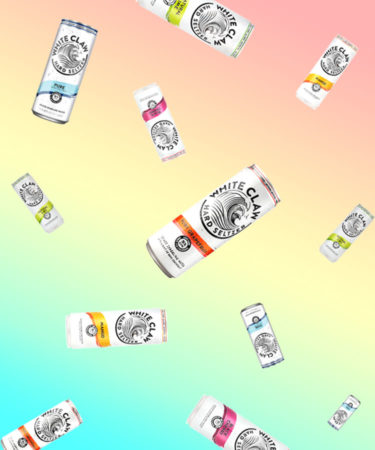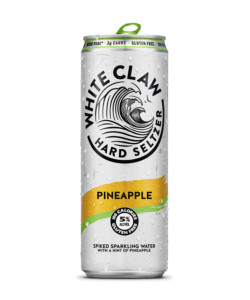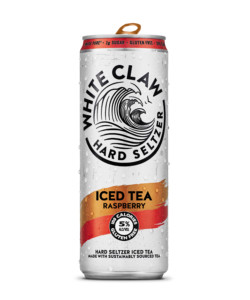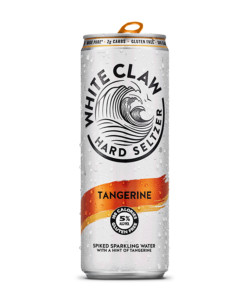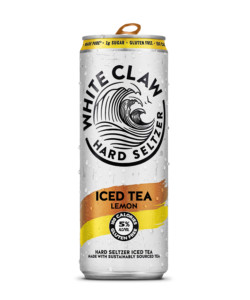White Claw has quickly become the most ubiquitous hard seltzer brand on the market. Launched in 2016, the 100-calorie, two-carbohydrate, five percent ABV fizzy treat now accounts for over half of the hard seltzer market share. Analysts expect hard seltzer to become a $30 million market by 2025, with White Claw remaining the top seller.
Some even theorize that hard seltzer’s recent meteoric rise in popularity has reignited the public’s interest in non-alcoholic seltzer, too. Since the rise of White Claw and its top competitors such as Truly, La Croix has seen a 42 percent increase in sales.
Wondering what the hype is about? Read on to answer all the questions you might have and discover interesting facts about White Claw.
-
What alcohol is in White Claw?
White Claw has been compared to everything from vodka soda to the new IPA. But it’s actually neither of these things. White Claw is a flavored malt beverage (FMB), a category of drinks that not many people had heard of a few years ago, but is much more well-known now, thanks in large part to this brand. The White Claw ingredients include “a blend of seltzer water, its gluten-free alcohol base, and a hint of fruit flavor,” a brand representative tells VinePair. “The alcohol in White Claw Hard Seltzer comes from fermented sugars derived from malted gluten-free grains.” Further confusing matters over whether there is vodka in White Claw is the fact the brand now produces a line of distilled spirits, including a handful of flavored expressions.
-
Who makes White Claw?
White Claw is produced by Mark Anthony Brands, a division of the Mark Anthony Group of Companies that also includes Mark Anthony Brewery and Mark Anthony Wine and Spirits.
Although not named after the famed singer, this Mark Anthony should still ring a bell: It’s the very same company that produces Mike’s Hard Lemonade, Cayman Jack, and MXD Cocktail Co. This information, however, does not appear anywhere on White Claw’s website, packaging, or social media.
-
White Claw is making waves.
As of May 2019, dollar sales of White Claw’s mixed 12-packs saw a 320 percent increase compared to the year prior. By 2020, its popularity among millennial drinkers exceeded that of almost every global beer brand apart from Corona and Bud Light, according to YouGov.
In 2020, White Claw sales continued to soar. Despite global bar and restaurant closings, sales were up triple digits again and continue to climb. White Claw’s off-premise sale success has prompted the entrance of dozens of other hard seltzer and ready-to-drink cocktail brands into the market.
-
Bars are running out of it.
Bartenders and alcohol distributors across the nation say they can barely keep White Claw on the shelves. It’s a common phenomenon: When a bar runs out of White Claw, patrons say it has been “declawed.”
Sales were up so much in the summer of 2019 that Mark Anthony Brands even had to declare a “nationwide shortage” of White Claw. Just a few years ago, who could have imagined that boozy carbonated water would be so coveted?
-
There are laws when you’re drinking claws.
In July 2019, inspired by the mantra, “ain’t no laws when you’re drinking Claws,” (origin: unknown), comedian Trevor Wallace released a video satirizing the typical White Claw drinker. He also designed and sold more than 1,000 T-shirts emblazoned with the phrase.
Wallace was quickly hit with a cease and desist from the seltzer company, prompting him to switch alliances and become a proponent for Natural Light Hard Seltzer. He’s a Natty boy now.
-
White Claw is internet famous.
It has Instagram fan accounts, including @itsawhiteclawsummer, @whiteclawbitches, @whiteclawgang, and @clawdaddycentral. Its hashtag #whiteclaw has generated nearly a quarter of a million images at press time.
And then, there are the memes. From “Change my Mind” to “Distracted Boyfriend” to “Pennywise the Clown,” White Claw has eternally transcended its liquid form.
-
There’s a flavor for everybody.
White Claw is currently available in 11 fruity flavors and three original seltzer variety packs.
The first pack offers the flavors Black Cherry, Ruby Grapefruit, Natural Lime, and Raspberry. Flavor Collection No. 2 has the flavors: Lemon, Tangerine, Mango, and Watermelon. The third flavor collection introduces Strawberry, Pineapple, and Blackberry, alongside fan favorite Mango. Basically, there’s a White Claw drink for everyone.
-
White Claw has dipped — or steeped — its toes in the hard iced tea market.
White Claw released hard seltzer iced teas in the flavors Peach, Raspberry, Lemon, and Mango. This release comes only months after the brand’s main competitor Truly released its own hard seltzer iced tea line. As the rivalry continues, the White Claw alcohol empire keeps growing.
-
If you’re looking for a stronger buzz, you’re in luck.
In April 2021, White Claw unveiled White Claw Surge, a harder seltzer that clocks in at eight percent ABV, three percent higher than the brand’s classic seltzers.
-
You can be White Claw.
Come October, or whenever you get your next paycheck and are looking for a little extra attention, you can buy yourself a White Claw costume.
-
Is White Claw beer?
While it tastes nothing like a pilsner or IPA, White Claw is technically sold and taxed in the same way as beer because of how it’s produced and its alcohol content. But generally speaking, when industry analysts talk about White Claw and other hard seltzers, they include them in a separate category, often referred to as “beyond beer.”
